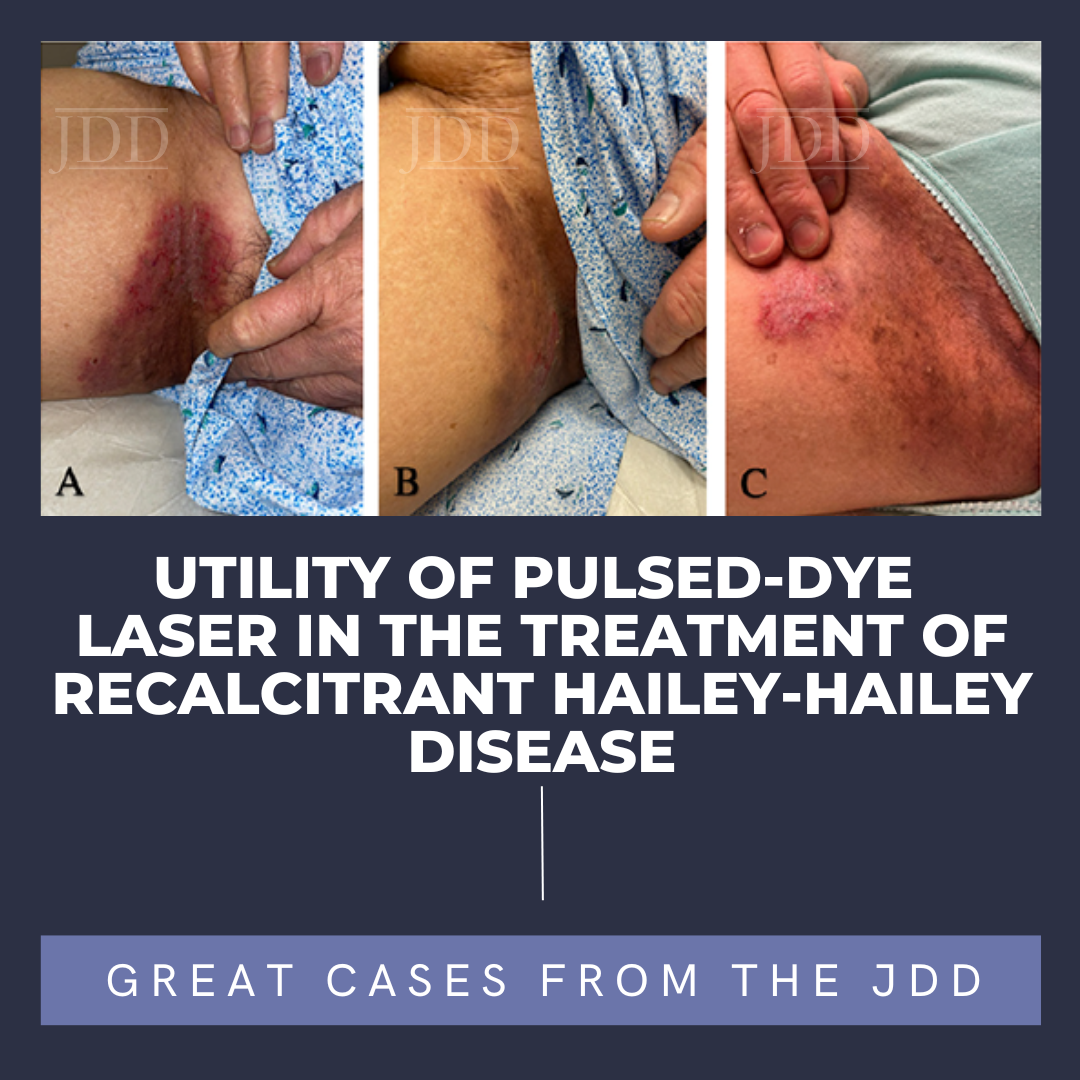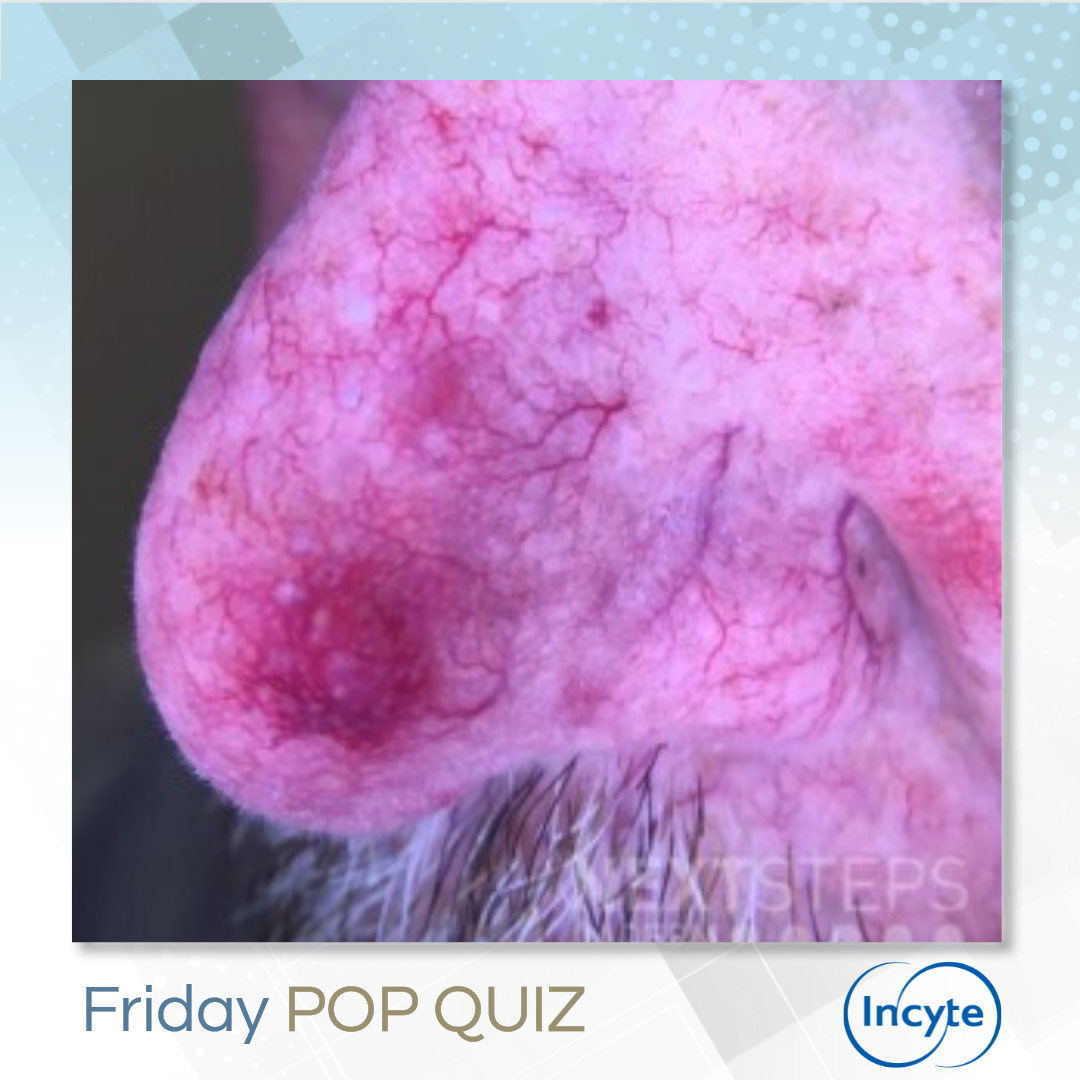Utility of Pulsed-Dye Laser in the Treatment of Recalcitrant Hailey-Hailey Disease
204152041520415 INTRODUCTION
Benign Familial Pemphigus, or Hailey-Hailey Disease (HHD), affects intertriginous areas of the skin causing epidermal blistering and vesicles that coalesce into weeping and crusting plaques.¹
The loss-of-function mutation of the ATP2C1 gene causes a disruption in calcium homeostasis of keratinocytes. The resulting dysfunction in desmosomes and cell-cell adhesion causes acanthol …
INTRODUCTION
Benign Familial Pemphigus, or Hailey-Hailey Disease (HHD), affects intertriginous areas of the skin causing epidermal blistering and vesicles that coalesce into weeping and crusting plaques.¹
The loss-of-function mutation of the ATP2C1 gene causes a disruption in calcium homeostasis of keratinocytes. The resulting dysfunction in desmosomes and cell-cell adhesion causes acanthol …
 INTRODUCTION
Benign Familial Pemphigus, or Hailey-Hailey Disease (HHD), affects intertriginous areas of the skin causing epidermal blistering and vesicles that coalesce into weeping and crusting plaques.¹
The loss-of-function mutation of the ATP2C1 gene causes a disruption in calcium homeostasis of keratinocytes. The resulting dysfunction in desmosomes and cell-cell adhesion causes acanthol …
INTRODUCTION
Benign Familial Pemphigus, or Hailey-Hailey Disease (HHD), affects intertriginous areas of the skin causing epidermal blistering and vesicles that coalesce into weeping and crusting plaques.¹
The loss-of-function mutation of the ATP2C1 gene causes a disruption in calcium homeostasis of keratinocytes. The resulting dysfunction in desmosomes and cell-cell adhesion causes acanthol … 

 A 60-year-old man presents with a tendency to flush combined with a background of persistent facial erythema. On exam, you notice a background of telangiectasias. He has maximized treatment with topical and oral medications and is considering laser treatment for his prominent blood vessels. Which is the laser of choice for this patient’s condition?
A. Pulsed dye laser
B. KTP laser
C …
A 60-year-old man presents with a tendency to flush combined with a background of persistent facial erythema. On exam, you notice a background of telangiectasias. He has maximized treatment with topical and oral medications and is considering laser treatment for his prominent blood vessels. Which is the laser of choice for this patient’s condition?
A. Pulsed dye laser
B. KTP laser
C …